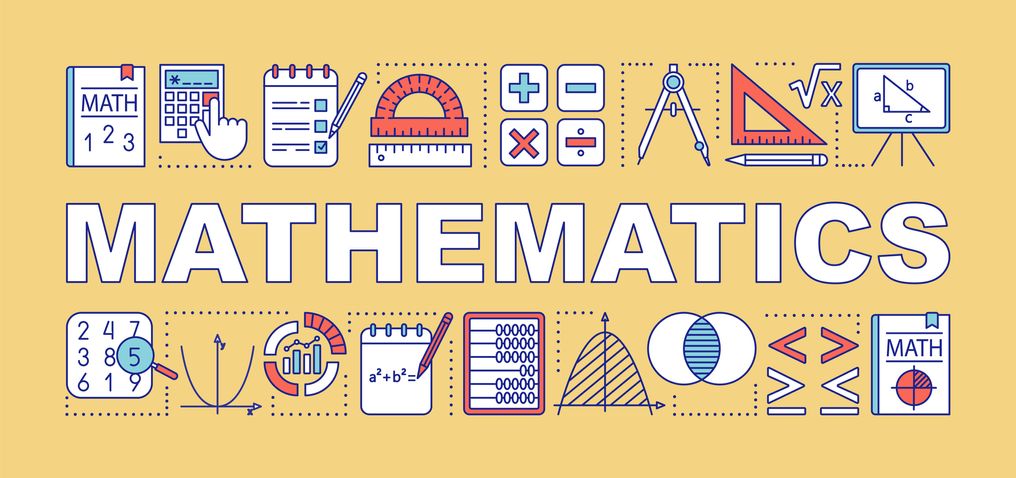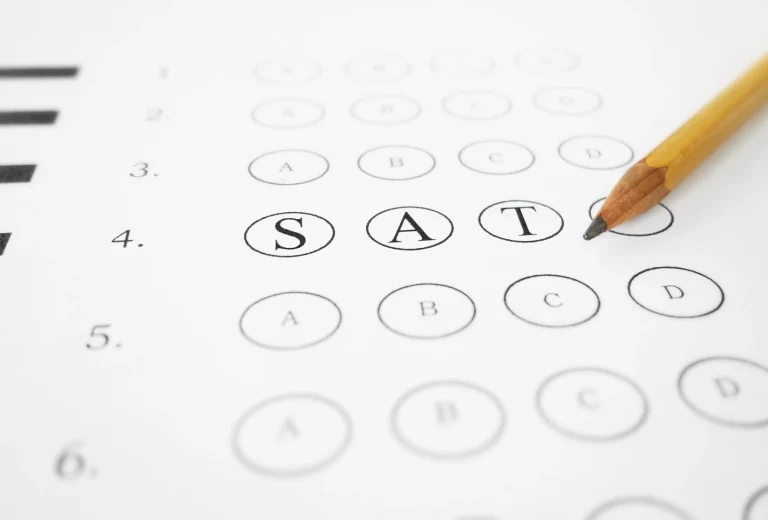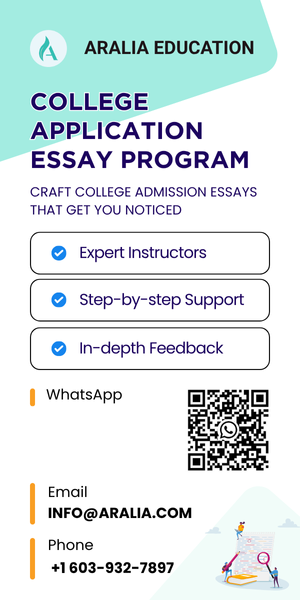In 2022, the U.S. nonprofit Just Equations partnered with the National Association for College Admission Counseling to release a research report examining U.S. high school counselors’ perspectives on math course selection for college admissions.
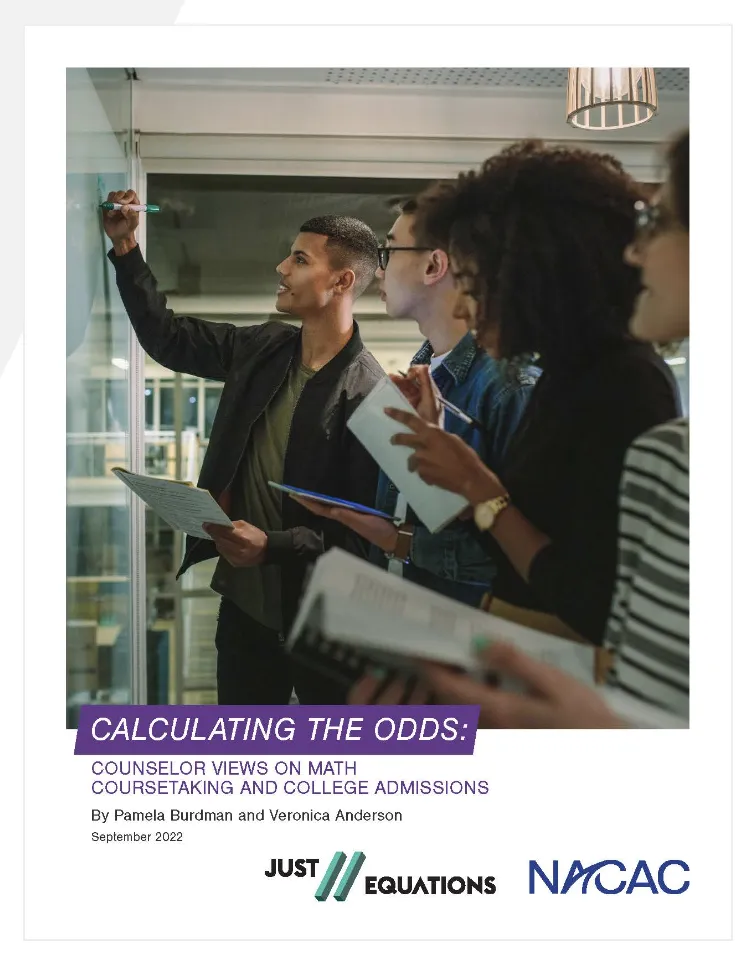
The report revealed that 53% of college admissions officers believe studying calculus provides a significant admissions advantage. Additionally, 93% of high school counselors recommend students take calculus courses during high school.
Given this context, it’s no surprise that each year, many U.S. high school students choose to take AP Calculus AB or AP Calculus BC.
Both courses and their respective exams cover the fundamentals of introductory calculus, but BC delves deeper into calculus operations and applications, including topics like series.
So, what’s the difference between these two courses? How should students decide which one to take? Let’s dive into the details!
1. AP Calculus AB and BC: What is AP Calculus?
AP (Advanced Placement) Calculus is a set of two courses and exams the College Board offers high school students. AP Calculus AB covers basic introductions to limits, derivatives, and integrals. AP Calculus BC covers all AP Calculus AB topics plus additional topics (including more advanced integration techniques such as integration by parts, Taylor series, parametric equations, vector calculus, polar coordinate functions, and curve interpolations).
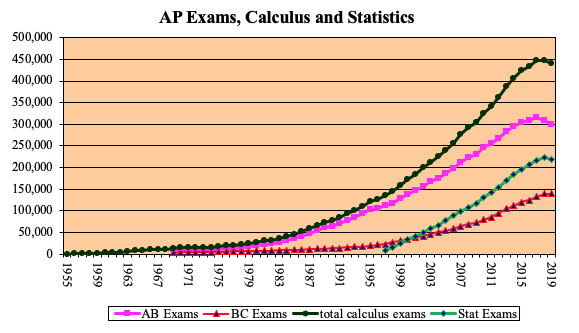
2. What is covered in the AP Calculus courses?
AP Cal AB and BC cover similar topics, with BC going deeper into specific topics. Both courses cover 3 big ideas: Change, Limits, and Analysis of functions.
- Changes: Using derivatives to describe rates of change of one variable concerning another or using definite integrals to describe the net change in one variable throughout another allows students to understand the difference in various contexts. It is critical that students grasp the relationship between integration and differentiation as expressed in the Fundamental Theorem of Calculus—a central idea in AP Calculus.
- Limits: Beginning with a discrete model and then considering the consequences of a limiting case allows us to model real-world behavior and to discover and understand significant ideas, definitions, formulas, and theorems in calculus: for example, continuity, differentiation, integration, and series (BC only).
- Analysis of Functions: Calculus allows us to analyze the behaviors of functions by relating limits to differentiation, integration, and infinite series and relating each of these concepts to the others.
Both AP Cal AB and BC share 8 units: Limits and Continuity, Differentiation: Definition
and Fundamental Properties, Differentiation: Composite, Implicit, and Inverse Functions, Contextual Applications of Differentiation, Analytical Applications of Differentiation, Integration, and Accumulation of Change, Differential Equations, Applications of Integration. The other two units that AP Cal BC covers are: Parametric Equations, Polar Coordinates, and Vector-Valued Functions, Infinite Sequences, and Series.
Due to the difficulty level, Calculus AB and BC are college-level calculus courses; therefore, students are required to take pre-calculus. Depending on your interest and goals, you may take AB or BC, or both.
3. What is covered in the AP Calculus exams?
Both exams are long – 3 hours and 15 minutes across 2 sections. The first section has 45 multiple-choice questions, makes up 50% of the score, and includes 2 parts: with and without using a graphing calculator. The second section has 6 free-response questions. In part A, you can use a graphing calculator to solve 2 problems in 30 minutes. In part B, you cannot use a graphing calculator to solve 4 problems in 60 minutes.
Despite AP Calculus BC covering more topics and having more in-depth content – seemingly harder, 43.5% of students score 5 on the AP Calculus BC, compared to the 22.4% of students scoring 5 on the AP Calculus AB. But overall, half of the students who took the same received a passing grade (3 and above).
Exam | 5 | 4 | 3 | 2 | 1 |
AP Calculus AB | 22.4% | 16.2% | 19.4% | 21.7% | 20.3% |
AP Calculus BC | 43.5% | 15.9% | 19% | 15.2% | 6.3% |
Learn about the difference between AP Calculus AB and BC here.
AP Calculus AB and AP Calculus BC exam schedules can be found in this link.
4. Key Differences Between AP Calculus AB and BC
Level of Difficulty
AP Calculus AB is designed to be equivalent to the first semester of a college-level calculus course, covering about two-thirds of the material typically taught in a full year of college calculus. In contrast, AP Calculus BC encompasses the entire first year of college calculus, including both the first and second semesters. As a result, BC is more challenging and includes additional topics such as parametric equations, polar coordinates, and series. This added difficulty also means that AP Calculus BC holds more weight in college admissions and often offers higher credit transfer potential.
Study Time
While AP Calculus AB generally requires one academic year to complete, AP Calculus BC demands a longer commitment, often an additional year. Both exams are administered simultaneously, so students can only choose one per academic year. However, students are not required to take AP Calculus AB before pursuing AP Calculus BC.
Student Goals
The choice between the two courses also depends on a student’s goals and academic strengths. Students interested in STEM fields, such as biology, chemistry, computer science, engineering, or business, may benefit more from taking AP Calculus BC, as it offers a deeper foundation in advanced calculus topics. On the other hand, students who are less confident in their math abilities or those pursuing humanities and social science majors may find AP Calculus AB a more suitable option. Ultimately, the decision should align with a student’s career aspirations and readiness to handle the coursework.
5. Choosing Between AP Calculus AB and BC
When to Choose AP Calculus AB
- If you’re less confident in your math skills.
- To allow more flexibility for other subjects.
- If you plan to major in humanities or social sciences.
When to Choose AP Calculus BC
- If you’re confident in your math skills.
- If you’ve taken Pre-Calculus.
- If you plan to major in STEM fields, including biology, chemistry, computer science, or business.
6. How to prepare for the exams
Take practice tests to evaluate your skills.
Before starting to study and learn / reinforce topics for the exam, we always suggest students take a practice test to gauge their skills and identify areas of knowledge deficit. In addition to learning all the materials, focus your studying effort on the areas that need improvement. After reviewing the AP course content, you should compare it with the syllabus for your class in school to make sure all topics on the exam are covered in class and make sure the exam formats are also discussed in class.
Practice tests can also be taken throughout the review process to ensure that you’re on track with the learning objectives and that you are all caught up with the knowledge required for the exams. Students have access to AP past tests from 1998 to 2020 on the College Board site and AP Classroom.
Taking classes and learning the materials
When preparing for the exam, students can have the option to take classes outside of the regular classroom hours. Taking online courses from Aralia Education will provide you with a guide on the course content and structure as well as review sheets and study guides for each unit. The AP Calculus AB and AP Calculus BC classes are taught by experienced AP Calculus teachers.
For students who are taking the AP Calculus BC class, here are 4 tips to get a 5 in the exam!
Make a study plan
Referring to our 4 Steps to Study For The AP Exams, we have provided a checklist by Trevor Packer, Senior VP of Advanced Placement at the College Board, to make sure students stay on top of their schedules. The schedule is generic to preparing for the AP exams, but overall, students can use this as a guide for preparing for AP Calculus and other AP exams.
7. AP Calculus Score Calculator
This is a projected calculation of your AP Calculus. Please keep in mind that this score will not accurately reflect your score, but this is our projection based on the scoring guidelines given by the College Board.
There are 45 questions for the multiple-choice section, which is worth 50% of your score, and 6 Free Response Questions, which are worth 50% of your score.
You can calculate your point by this formula:
(Multiple Choice Score / 45 x 2.5) + (Free Response Score / 54 x 2.5) = Total Score
8. Receiving AP Calculus AB & BC tutoring
Aralia’s Calculus tutors are inspired teachers and professors committed to student success. They are recognized in their field or teaching at top US high schools and colleges/universities. In addition to their impressive credentials, Aralia’s Calculus tutors are skilled at tailoring their teaching style to the individual needs of each student. They are patient, supportive, and experienced at helping students overcome math anxiety and build confidence in their abilities. Whether a student is struggling with the basics of calculus or seeking to deepen their understanding of advanced concepts, Aralia’s tutors provide personalized guidance and support to help them achieve their academic goals.
In addition to AP Calculus AB and BC tutoring, we also offer tutoring in a wide range of other AP subjects, including but not limited to AP Physics, AP Chemistry, AP Biology, AP Computer Science, AP Statistics, and AP English Language and Composition, and more.
Introducing Aralia Test Preparation Bootcamp, where students can excel in standardized tests with our comprehensive approach. At Aralia, we prioritize maximizing study efficiency and accelerating score improvement through a combination of practice examinations, expert strategies, and personalized guidance. Our Bootcamp offers students the opportunity to achieve significant score improvements within a condensed timeframe by learning strategic approaches tailored to their individual needs. With instructors who are AP readers, students benefit from expert teaching and gain valuable insights into exam techniques. Furthermore, our program equips students with versatile skills and strategies that can be applied to a range of standardized tests, ensuring they are well-prepared to adapt to various exam types.
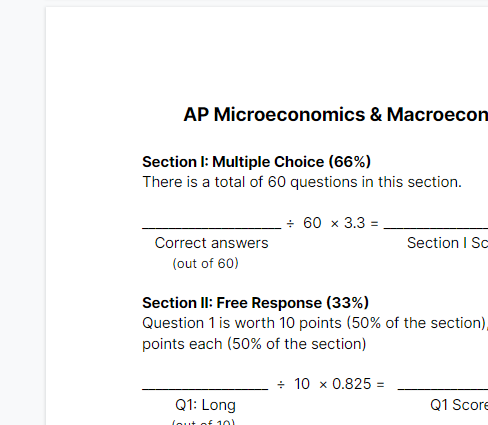
FREE AP Scoring Worksheet
With the scoring worksheet, you will be able to calculate your target score in preparation for the upcoming exam in May. We also have a full scoring worksheet available below if you want to print it out and keep it in your folder.
Description: Improve your AP score with this AP Calculus AB course. Taught by an experienced AP Calculus teacher from Hotchkiss School, the course will review the important knowledge in the exam. In addition, the teacher will cover multiple-choice questions and free-response questions. We will not cover Parametric Equations, Polarm Coordinates, Vector-Valued Functions, and Infinite Sequences and Series in this course.
Project time: Rolling enrollment throughout the year, one class every weekend, 1.5 hours per class

